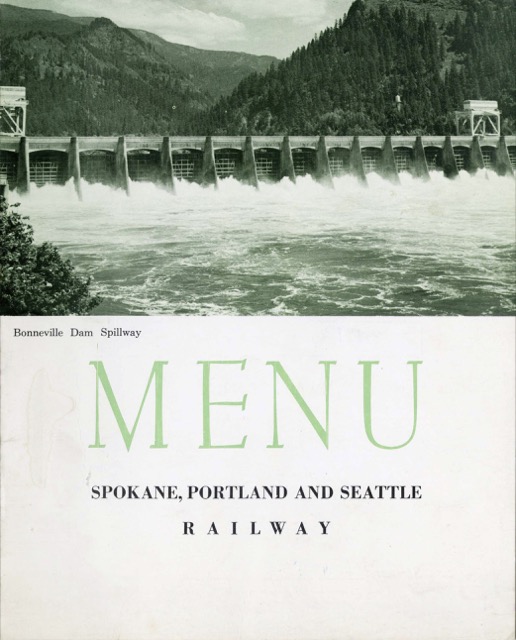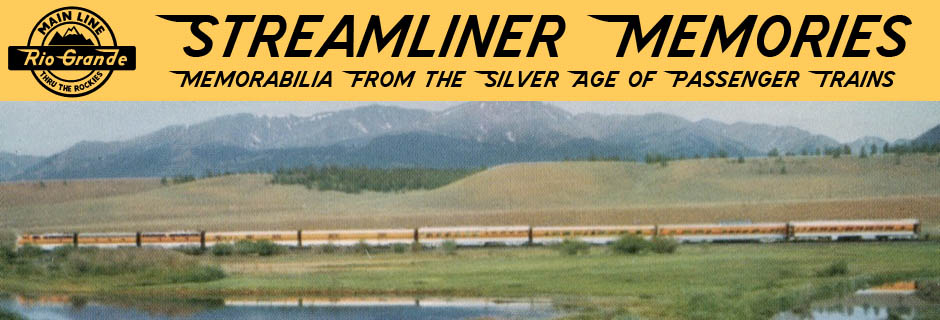Dated January 1958, this menu offers a pretty wide selection of meals. The table d’hôte side has four entrées: prime rib, veal cutlets, baked salmon, and chicken a la king. With appetizers, soup, potatoes, vegetable, bread, dessert, and beverage, these meals are all $2.95 (about $25 in today’s dollars) except the prime rib which is $3.25 (about $27 today). There is also a “plate dinner,” which is a “chef’s suggestion” or ham or cheese omelet, with potatoes, vegetable, bread, dessert, and beverage for $1.95 (about $16 today). I wonder what the chef suggested.
 Click image to download an 2.0-MB PDF of this menu.
Click image to download an 2.0-MB PDF of this menu.
Entrées on the a la carte side include omelets, lamb chops, eggs, sirloin steak, veal, roast beef, chicken a la king, and sardines. There are also soups, vegetables, salads, samdwiches, breads, and desserts. All by itself, the sirloin steak is $3, or about $25 today.
Bonneville was the first dam built on the Columbia. The Columbia River dams certainly contributed to the growth and wealth of the Pacific Northwest, by providing both electricity for aluminum and other factories and water for irrigation. However, they also contributed to the decline of the Columbia River salmon fishery, one of the largest in the world. The Corps of Engineers, which built Bonneville, at least put in fish ladders to allow the salmon passage. The Bureau of Reclamation, which built Grand Coulee, did not, and the upper Columbia fishery–an annual run of huge salmon known as “June hogs”–was lost forever.

The SP&S was never known for name trains or high speed service. It just served an area of sparse population between Spokane and Portland and never did make it to Seattle on its own tracks. It had a number of agricultural and tourist branches. It was always owned by the GN but pretty much to its own devices, operating second hand equipment and motive power from the GN. Nevertheless, it ran a good passenger service between Spokane and Portland and down into eastern Oregon on the old Oregon Electric. The dining car service was always top notch, and would remain so until the BN merger and the coming fo Amtrak. I had the pleasure of riding one of their unnamed trains from Spokane to Portland and the food was exceptionally good.
Regards, Jim